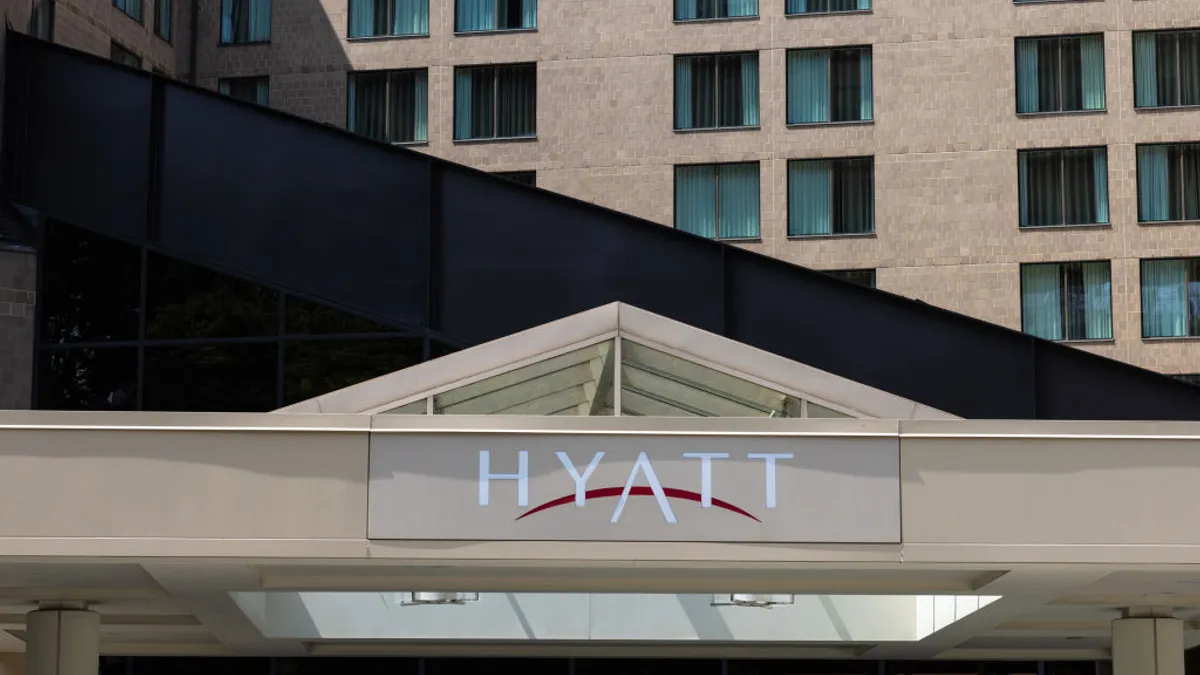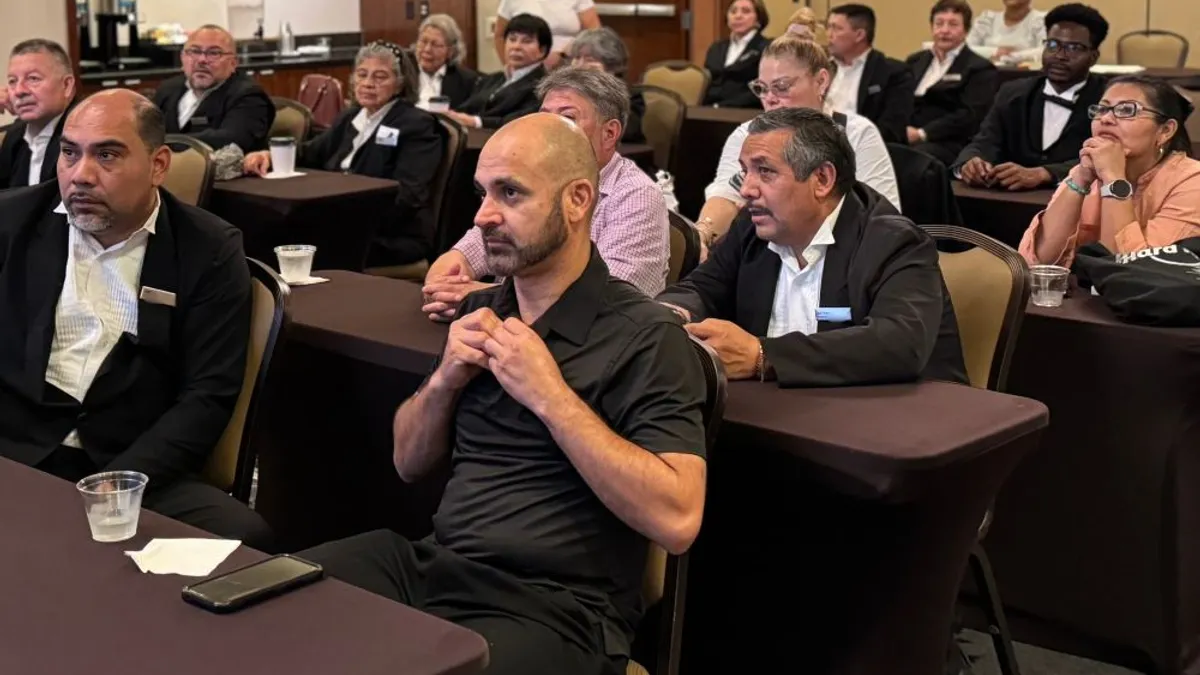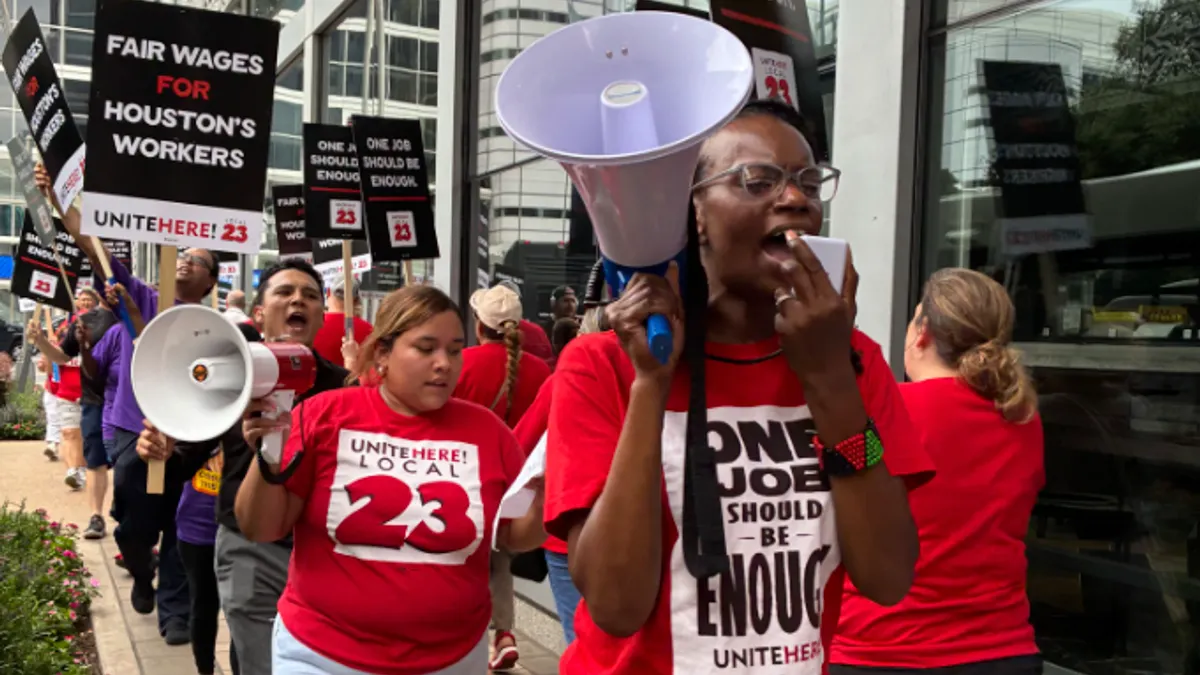On October 26, the National Labor Relations Board published an update to the standard for defining what can be considered a “joint employer” under the National Labor Relations Act. It made its decision effective Dec. 26.
This week, the NLRB pushed the effective date back two months to “facilitate resolution of legal challenges with respect to the rule.”
Those legal challenges have come from businesses and business associations, including those in the hotel industry who say the rule would harm the franchise model. Meanwhile, unions are expected to benefit, as the Associated Press reports unionization could be easier under the expanded joint employer definition.
As the rule continues to be contested, debates over its legality are playing out in the hotel industry, where labor disputes and shortages continue to impact hoteliers.
Defining a “joint employer”
NLRB’s rule says a “joint employer” is when two or more employers are jointly responsible for workers’ essential terms and conditions of employment. The employers are both liable for violations of the NLRA and have a shared responsibility to bargain with employee unions.
The new rule, when in effect, would involve more companies in labor negotiations. For example, Hilton could be responsible for participating in labor negotiations, even if a franchisee owns the hotel partaking in them. The decision — coming from a board appointed by the president who touts himself as “the most pro-union president in American history” — is believed to make unionization efforts at franchises easier.
In an NLRB release, the board’s Chairman Lauren McFerran said the new standard “reflects both a legally correct return to common-law principles and a practical approach to ensuring that the entities effectively exercising control over workers’ critical terms of employment respect their bargaining obligations under the NLRA.”
Meanwhile, Chip Rogers, president and CEO of the American Hotel & Lodging Association called the rule “devastating to the hotel industry.”
“This is a partisan gambit to force unions on hotel franchisees and their employees as well as countless other small businesses and workers across the country,” he said in a statement, adding that he believes the move “will effectively dismantle the franchise business model.”
Michael Layman, senior vice president of Government Relations & Public Affairs at the International Franchise Association, echoed that sentiment. “People don't understand that a hotel is run by an individual business owner — a third party from a brand,” Layman told Hotel Dive. “There's an incredible amount of opportunity and local entrepreneurship available in the franchise model.”
In 2022, the U.S. franchise sector accounted for more than 790,000 establishments and nearly 8.4 million jobs, according to IFA’s 2023 economic outlook.
And, in a report produced for IFA, Oxford Economics found that 43% of franchisees expected some change in the franchisor/franchisee relationship as a result of the expanded joint employer definition. Of those respondents, 74% of franchisees expressed a “high level of concern” at the prospect of increased franchisor control and 55% expressed the same concern for reduced franchisor support.
“We viewed both of those possibilities as the two outcomes of joint employer — either brands are going to lean in closer to the operations of their franchisees, or they're going to distance themselves even more. And franchisees overwhelmingly respond that both outcomes are negative,” Layman said, adding that their sentiments speak to “how generally the balance of control in the franchising communities is just about right.”
Since the NLRB’s ruling, AHLA has joined IFA in pushing back.
Earlier this month, the association, along with the U.S. Chamber of Commerce, IFA and other groups, including the National Association of Convenience Stores and National Retail Association, sued the Biden administration. The suit challenges the legality of NLRB’s interpretation of the NLRA.
House and Senate lawmakers also introduced a bipartisan resolution to overturn the joint employer rule. AHLA applauded the move.
A long-contested rule
It’s not the first time the NLRB has issued such a ruling. A similar joint employer rule was in place between 2015 and 2017.
Since presidential administrations appoint NLRB members, the board’s opinions on the same issues can change from administration to administration. An Obama-appointed NLRB first issued its joint employer rule in 2015. Two years later, it was revoked by the board appointed under Trump.
Last month’s ruling “significantly resembles” the 2015 rule, according to an NLRB fact sheet. But the 2023 rule also offers guidance to parties about their rights and responsibilities, while clarifying that an employer must control one or more items on the board’s list of essential terms of employment.
IFA’s Layman said the 2015-2017 rule was “a very disruptive time.”
“The joint employer liability created by that policy cost the franchise community over $30 billion a year in extra operational and legal costs,” he said. “Over 300,000 job opportunities evaporated because of the changes to the franchisor-franchisee model created when brands are made liable for the actions of their independent franchisees.”
The Economic Policy Institute, a think tank centering on economic policy issues that affect low- and middle-income workers, sees it differently. The Trump-era rule, EPI said, resulted in “an annual transfer of $1.3 billion from workers to employers.”
EPI “strongly supports” the new NLRB ruling.
Lara Shortz, leader of the Labor and Employment group at law firm Michelman & Robinson, said the frequent rule changes from the NLRB can cause confusion.
“The rule has become controversial in that it has been swinging based on the political makeup of the Board — causing affected employers to have to see-saw between policies and practices that could have a significant impact on their business with respect to financial exposure and organizational structure,” Shortz told Hotel Dive.
Shortz noted that outsourced labor is an issue significantly impacted by rule changes.
“In a business where brand standards and customer service are critical, it’s a significant amount of pressure on the hotels to balance the needs for strong standards and service with the financial exposure brought about by the new rule,” she added.
While the nation’s largest hospitality union, Unite Here, did not share a statement regarding the joint employer rule, its affiliate Culinary Union is in the midst of unionization efforts across several resorts. If those unionization efforts reach the bargaining table, parent hotel companies — in addition to franchisees — could become more involved in negotiations.
The new joint employer rule is scheduled to go into effect on Feb. 26, 2024.

















